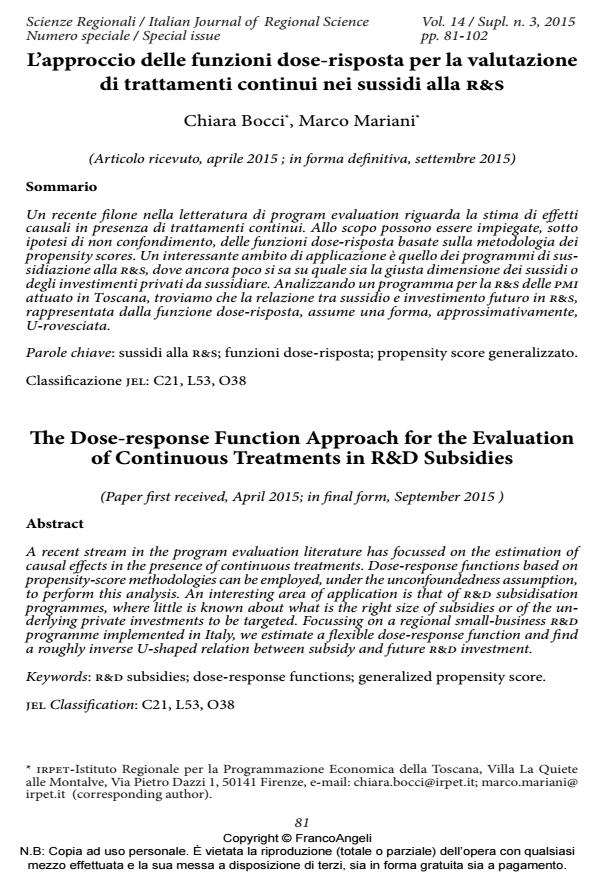The Dose-response Function Approach for the Evaluation of Continuous Treatments in R&D Subsidies
Journal title SCIENZE REGIONALI
Author/s Chiara Bocci, Marco Mariani
Publishing Year 2015 Issue 2015/3 Suppl.
Language Italian Pages 22 P. 81-102 File size 386 KB
DOI 10.3280/SCRE2015-S03005
DOI is like a bar code for intellectual property: to have more infomation
click here
Below, you can see the article first page
If you want to buy this article in PDF format, you can do it, following the instructions to buy download credits

FrancoAngeli is member of Publishers International Linking Association, Inc (PILA), a not-for-profit association which run the CrossRef service enabling links to and from online scholarly content.
A recent stream in the program evaluation literature has focussed on the estimation of causal effects in the presence of continuous treatments. Dose-response functions based on propensity-score methodologies can be employed, under the unconfoundedness assumption, to perform this analysis. An interesting area of application is that of r&d subsidisation programmes, where little is known about what is the right size of subsidies or of the underlying private investments to be targeted. Focussing on a regional small-business r&d programme implemented in Italy, we estimate a flexible dose-response function and find a roughly inverse U-shaped relation between subsidy and future r&d investment.
Keywords: R&d subsidies; dose-response functions; generalized propensity score.
Jel codes: C21, L53, O38
- The Effects of R&D Subsidies to Small and Medium-Sized Enterprises. Evidence from a Regional Program Marco Mariani, Fabrizia Mealli, in Italian Economic Journal /2018 pp.249
DOI: 10.1007/s40797-017-0062-2 - A comparative evaluation of regional subsidies for collaborative and individual R&D in small and medium-sized enterprises Annalisa Caloffi, Marco Mariani, Federica Rossi, Margherita Russo, in Research Policy /2018 pp.1437
DOI: 10.1016/j.respol.2018.04.022 - Place-based policy in southern Italy: evidence from a dose–response approach Alessandro Cusimano, Fabio Mazzola, Sylvain Barde, in Regional Studies /2021 pp.1442
DOI: 10.1080/00343404.2021.1902974
Chiara Bocci, Marco Mariani, L’approccio delle funzioni dose-risposta per la valutazione di trattamenti continui nei sussidi alla r&s in "SCIENZE REGIONALI " 3 Suppl./2015, pp 81-102, DOI: 10.3280/SCRE2015-S03005